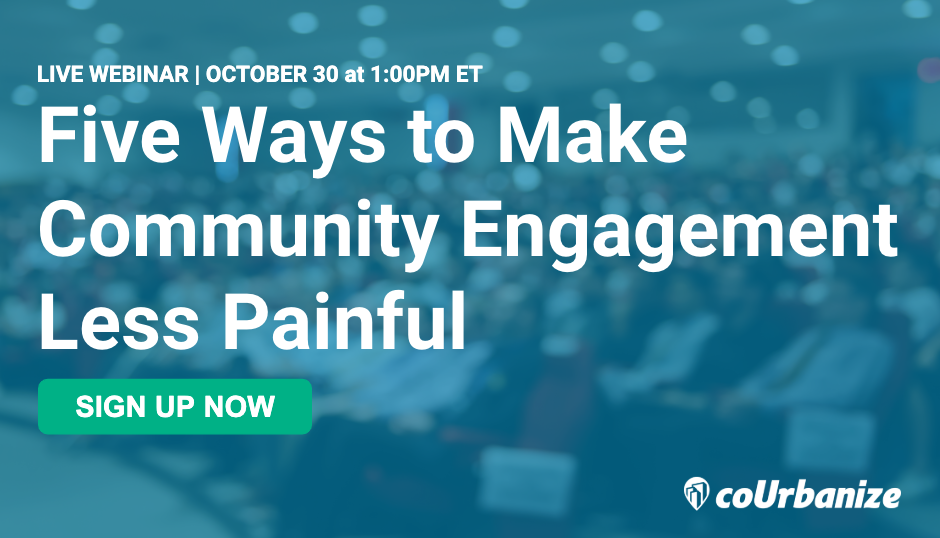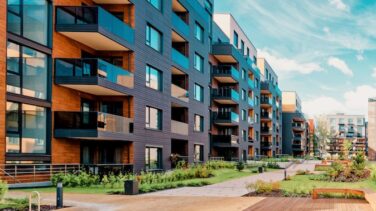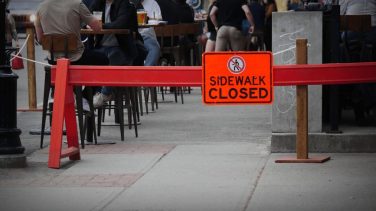The Process Doesn’t Welcome Inclusivity or Diversity
A crowded room at a nondescript city hall. Grumpy faces and crossed arms in the audience. Men in pressed suits and shiny shoes at the podium. Welcome to a typical community meeting about a proposed development in a growing suburb.
Those grumpy faces? They likely belong to white, middle-aged homeowners. This isn’t their first public meeting and it won’t be their last. They are ready to raise their hand for public comment, eager to share all the reasons why doesn’t need – especially if affordable housing is involved.
But those aren’t the facts. Most U.S. cities are facing a housing shortage (in Boston and other big cities, it’s a crisis) and residents are getting priced out. People who work in these metro areas can’t afford to live there. The barista who always remembers your order. The server who is so kind to you at dinner. The medical assistant at the assisted-living facility where your grandparents live. Your child’s favorite teacher.
These aren’t the voices heard at community meetings. The people who directly benefit from planned developments aren’t there to advocate for the developer’s vision. They don’t have childcare to attend an evening meeting. They may not feel comfortable communicating in English because it’s not their native language. They’re working second or third shift. Maybe they just don’t know about the meeting. Or frankly, they just don’t feel comfortable attending and speaking because of scenes like this.
It’s time for real estate developers and municipalities alike to recognize that these voices matter and change the process of community engagement to ensure these voices are heard, recognized and valued. Their feedback should help shape the future of these communities. It should help developers demonstrate community need and project support as they move through entitlements.
To do this, the process has to change. Community engagement can’t be limited to meetings on weekday evenings, especially when the tenor of those meetings is becoming even more hostile and oftentimes, openly racist and discriminatory.
This is not meant to be an exhaustive list – and we know we don’t have all the answers – but here are three ways to rethink community engagement with an eye towards improving inclusion and representation.
Rethink the traditional approach for public meetings.
We’re not suggesting that there’s no place for public meetings. There rightfully is. However, most developers fear promoting these meetings and hope for low attendance. Instead of operating from a place of fear and worry, prepare for the meeting by activating silent supporters, asking for letters of support and curating data around real public sentiment about the project. That data, both quantitative and anecdotal, lets development teams and planners fight emotions and misconceptions with facts at public meetings. But to do this requires making a shift from fearing public attention to welcoming it.
Learn how to address discriminatory remarks.
When meetings do happen, the meeting leader or chair should know how to set ground rules for public comment and address inappropriate comments as they are made. When affordable housing is included in a development proposal, that term sparks a lot of unfounded fears and misconceptions. Meeting leaders should have facts at the ready, including an easy-to-understand definition of what affordable housing actually is. (Boston does a good job of this.) Commissions, boards, city officials and development teams should all know how to handle and diffuse these situations. If it wouldn’t be accepted in an online forum – for example, coUrbanize has strict community guidelines – then it shouldn’t be allowed in a public meeting.
Meet people where they are.
If people won’t come to you, go to them. That could mean attending neighborhood association meetings or organizing meet-ups, but it also means sharing updates about your project where you know they are consuming information. That could be in a newsletter or Facebook update from their city councilor or a well-placed sign near the development site. This philosophy is important for gathering feedback too. People can’t always attend public meetings, but almost everyone has access to a computer or smartphone. Give community members a way to share feedback online or via text.
None of these fixes are silver bullets, but acknowledging the problem is the first step. The second is to actually do something about it and these steps are just a starting point.



